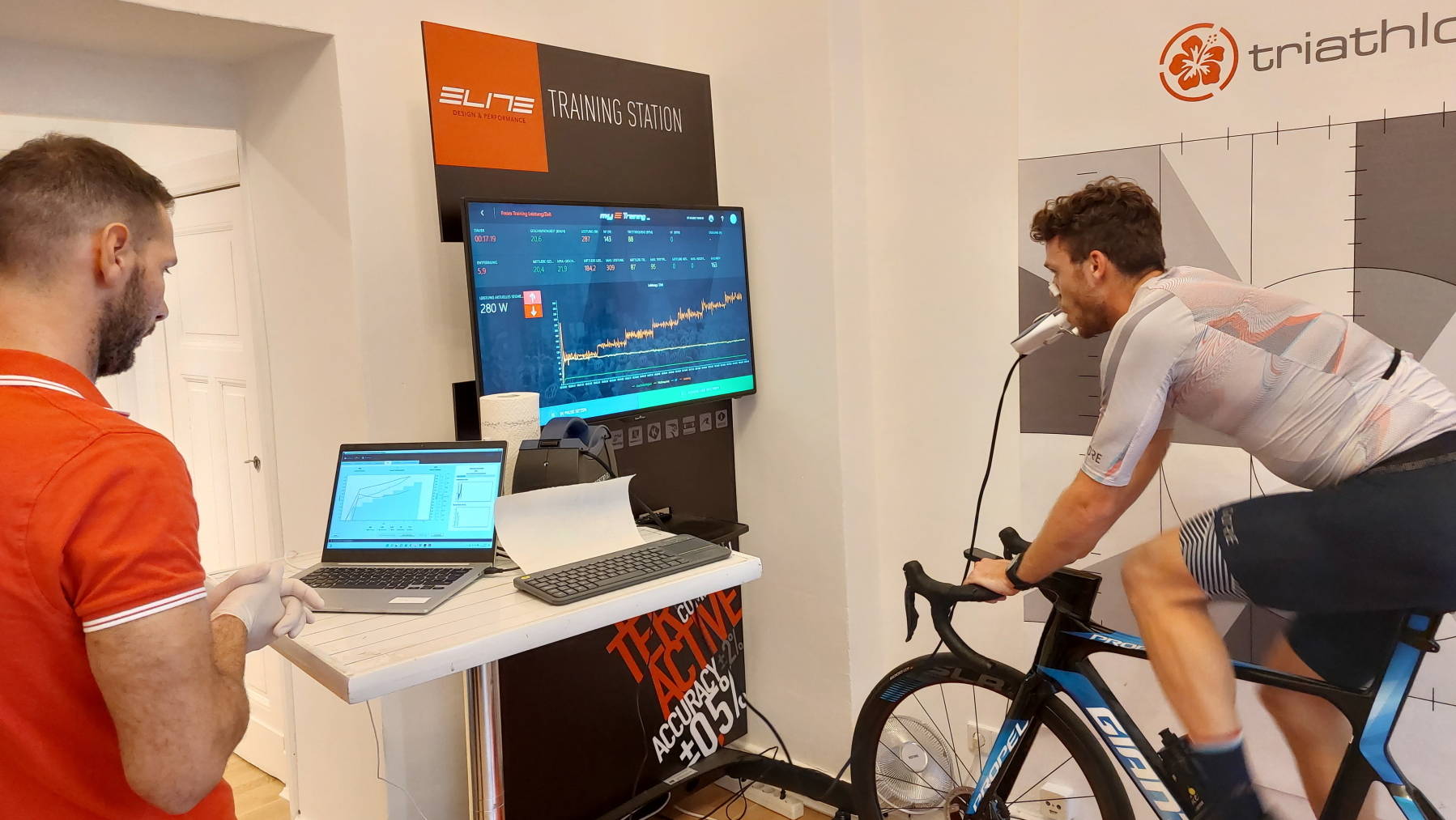Die Saisonpause ist für die meisten Triathleten schon vorbei, das Grundlagentraining hat begonnen. Voller Motivation blicken viele Athleten nun auf die Triathlonsaison 2024.
Gezielter Formaufbau benötigt gezieltes Training. Dafür ist es wichtig, Deine Trainingsbereiche zu kennen - daraus lassen sich genau die Trainingseinheiten ableiten, die Dich am meisten voranbringen.
Für den Winter bildet das Grundlagentraining den inhaltlichen Schwerpunkt. Doch "Grundlage" heißt aber nicht ausschließlich "lang und locker". Beim Schwimmtraining stehen technik- und auch kraftorientierte Inhalte weit oben. Beim Radfahren und Laufen sind Einheiten im Bereich der optimalen Fettstoffwechselrate am wichtigsten. Diese können und sollen aber auch immer mal wieder durch kurze Intensitätsspitzen im Entwicklungsbereich aufgewertet werden.
Viele erfolgreiche Leistungssportler trainieren gemäß dem 80/20 Prinzip. Dies ist ein bipolarer Trainingsansatz, wobei 80% des Trainings im Grundlagenbereich und 20% im Aufbau-/Entwicklungsbereich (EB) absolviert werden. Im Grundlagentraining geht es dabei vorrangig um langandauernde Bewegungsökonomie und die Verbesserung des aeroben Stoffwechsels. Die Trainingsreize im Entwicklungsbereich hingegen sind deutlich kürzer und intensiver. Hier steht vor allem die Verbesserung der maximalen Sauerstoffaufnahme (VO2max) und des anaeroben Stoffwechsels - also der individuellen (Schwellen)Leistung insgesamt im Vordergrund. Diese Trainingsbereiche werden regelmäßig ermittelt, um sie in den entsprechenden Trainingseinheiten gezielt ansteuern zu können.
Das Problem: Viele Hobby-Triathleten verbringen zu viel Trainingszeit genau dazwischen: gleichmäßig strukturierte Trainingseinheiten im mittleren / leicht erhöhten Intensitätsbereich (GA2 / unterer Schwellenbereich). Zu intensiv für Grundlage, zu wenig intensiv für Belastungsreize im Entwicklungsbereich. Diese Einheiten sind zwar gefühlt anstrengend, haben für den Formaufbau jedoch einen vehältnismäßig geringen Wert. Vor allem, wenn man regelmäßig so trainiert.
Sportwissenschaftlicher Hintergrund
Jede Trainingseinheit sollte das Ziel haben, den Körper einem sog. "wirksamen Belastungsreiz" auszusetzen, um den Funktionszustand (=die Leistungsfähigkeit) des Sportlers zu verbessern. Fehlt diese Wirksamkeit, investierst Du ggf. kostbare Trainingszeit in Einheiten, die Dich nur wenig oder gar nicht voranbringen ("leere Kilometer"). Um Deinem Training einen höchstmöglichen Wirkungsgrad zu verleihen, ist es wichtig, Deine individuellen Trainingsbereiche zu kennen, um diese gezielt ansteuern zu können. Jedem Trainingsbereich können bestimmte Anpassungsprozesse des Körpers und daraus resultierend bestimmte Trainingsmethoden, Umfänge und Intensitäten zugeordnet werden.
Ermittlung der individuellen Trainingsbereiche mittels Leistungsdiagnostik
Mit einer Aeroscan-Leistungsdiagnostik wird Dein aktueller Leistungszustand beim Radfahren oder Laufen sportwissenschaftlich abgebildet: im Verlauf eines Leistungsstufentest werden deine Atemgase und weitere Parameter asportwissenschaftlich gemessen und analysiert.
- VO2max, HFmax
- Individuelle Schwellenbereiche (Watt/Tempo/Herzfrequenz)
- FATmax (maximaler Fettstoffwechsel)
- Respiratorische Parameter & Energieverbrauch
- Anteiliger Kohlenhydrat-/Fettstoffwechsel
Daraus bestimmen wir im Anschluss Deine genauen Trainingszonen und wir besprechen im Rahmen der Auswertung Deine weitere Trainingssteuerung auf Grundlage dieser Daten.
- Grundlagenausdauer 1 / LIT (Low Intensity Training)
- Erweiterte Grundlagenausdauer (GA2)
- Wettkampf-/Schwellenbereich
- Entwicklungsbereich / HIT 1 (High Intensity Training)
- Spitzenbereich / HIT 2 (High Intensity Training)
Jedem Trainingsbereich können dann die effizientesten Einheiten für Dein weiteres Training zugeordnet werden. Wenn Du möchtest, erstellen wir den gesamten Trainingsplan für Dich.
Weiterhin interessant: die Daten Deiner Diagnostik sind nicht nur für die Trainingssteuerung, sondern auch für die Prognose Deiner Wettkampfleistung relevant. Mit einer Leistungsdiagnostik 1-2 Wochen vor dem Wettkampf können wir Dein optimales Wettkampftempo bestimmen, messen den Energieverbrauch dabei und können eine darauf abgestimmte Ernährungsstrategie ableiten (vor allem für Mittel-/Langdistanzathleten sehr wichtig).
Fazit: zielgerichtetes Training ist für Anfänger und Fortgeschrittene gleichermaßen der Schlüssel zum Erfolg. Eine Aeroscan-Leistungsdiagnostik ist die Basis für optimalen Formaufbau und Wettkampfleistung.




















